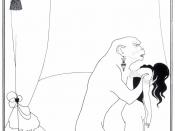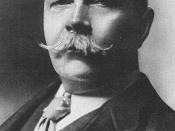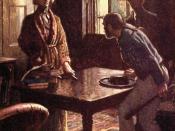Crime Fiction HSC
Intro
*Thesis - Crime fiction genre maintained popularity throughout ages due to ability to evolve and transcend contextual barriers to suit changing paradigms
*Throughout the changing values of society one has remained the same: the value of justice and the trust that it will be upheld, crime fiction manipulates this value giving the audience a sense of security. Presents perfect world.
*Although not valued as high literature, postmodern and allows reader to form expectations.
*Each text reflects context and values:
oMurders in the Rue Morgue, Edgar Allan Poe - Locked room mystery
oThe Big Sleep, Howard Hawks - film noir genre, reflects post WWII
oInspector Hound, Tom Stoppard - parody of traditional golden-age conventions
oThe Other Side of Sorrow, Peter Corris - fusion of modern crime fiction and film noir techniques
The Murders in the Rue Morgue
*First published 1841
*Set - Paris 1830/40's - reflects need for order + conservative values - radical
*Gave birth to modern day detective story, locked room.
Poe characterised as 'ratiocination' - solving a crime using logical and methodical deductive reasoning
*Modus Operandi - melds facts from current events, history + personal experience.
*Parisian, Monsieur C. Auguste Dupin - Precise, intelligent and methodical.
-Police believed trail was cold, Dupin was convinced otherwise
-Reinstates justice.
*Techniques - sophisticated Language 'The Parisian police, so much extolled for acumen, are cunning, but no more.' Reflects time
-Narrator is side-kick, less intelligent.
-Extracts from newspapers 'Pierre Moreau, tobacconist...' realistic, slow unraveling of crime
*Denouement - convenient, solved by Dupin confessed by owner of orangutan.
Valued as one of the first writers
Inspired character Holmes created by Sir Arthur Conan Doyle in 1887, who became the most famous fictional detective and lives on today.
This style was followed by the Golden age era, a 'cosy' style...


